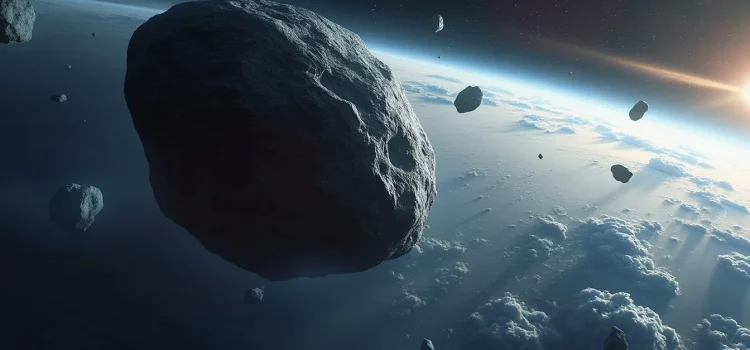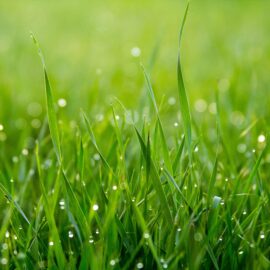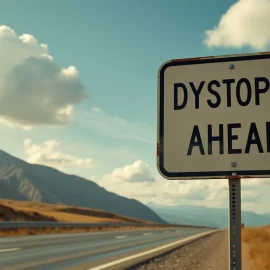

This article is an excerpt from the Shortform book guide to "The Precipice" by Toby Ord. Shortform has the world's best summaries and analyses of books you should be reading.
Like this article? Sign up for a free trial here.
Are you prepared for nature’s most devastating events? What would happen if an asteroid hit Earth or a supervolcano erupted?
In The Precipice, Toby Ord contends that natural threats pose significant risks to humanity’s survival. From extraterrestrial dangers to terrestrial hazards, these events could cause global catastrophes. While the chances are low, their impact would be severe and largely beyond our control.
Read on to discover the fascinating and terrifying details of these natural threats and how they could reshape our world.
Natural Threats
According to Ord, comprehending humanity’s precarious situation requires an understanding of potential existential catastrophes, including natural threats (as opposed to man-made threats). Ord explains that there are three main natural risks: asteroids, stellar explosions, and supervolcanic eruptions. While the chances of any of these catastrophes occurring is much lower than the risk of a man-made catastrophe, it’s important to understand them because their occurrence is completely out of our control—human actions can’t cause them, and human actions can’t prevent them. We can only prepare for them through further research.
Extraterrestrial Threats: Asteroids & Stellar Explosions
Ord addresses two major extraterrestrial threats—asteroids and stellar explosions. Upon collision with Earth, a catastrophe-causing asteroid would throw dust and debris into the sky, blocking out the sunlight and causing global cooling. The subsequent lack of sunlight and extreme cold would then cause numerous plants and animals to die off, resulting in famine extreme enough to possibly cause extinction. Further, if a species-ending asteroid ends up on a collision course with Earth, there’s little our current technology can do to increase our chances of survival. Therefore, it’s crucial to dedicate more time and research to survival strategies.
(Shortform note: An asteroid such as the one Ord discusses hit the earth millions of years ago, causing dinosaurs to go extinct, and the information we can gather about the plants and animals that survived may help us survive a similar event in the future. For example, scientists believe many small mammals survived because they were able to hide deep underground, and crocodiles were believed to survive, in part, because of their diverse diet. There were also plants, like ferns, that recovered quickly. We can learn from this information to help us survive. For example, we might build shelters deep underground, cultivating and integrating catastrophe-resilient food sources like ferns into our diet to have a better chance at survival.)
Ord says there are two types of stellar explosions that threaten us—supernova and gamma ray bursts. Supernovas produce massive explosions that can be seen from galaxies away. On the other hand, scientists theorize that shorter gamma ray bursts originate from a rare type of supernova while longer bursts originate from the collision of two neutron stars. If one of these events occurs close to Earth, they could trigger atmospheric reactions that would significantly erode our ozone layer and increase our exposure to ultraviolet (UV) radiation for several years.
(Shortform note: While Ord says that stellar explosions are a risk because they erode the ozone layer, he doesn’t specify why ozone depletion is threatening. Scientists explain that ozone depletion would expose the earth to extreme UV radiation, which would negatively impact all life on Earth. For humans, this could result in skin diseases, cataracts, cancer, quick aging, sunburn, and weak immune systems. The environment would struggle due to decreased growth, flowering, and photosynthesis in plants. The marine food chain would also be at high risk due to the destruction of plankton, a foundation of the food chain.)
Terrestrial Threats: Supervolcanic Eruptions
The biggest terrestrial threat we face, according to Ord, is a supervolcanic eruption. Unlike regular volcanos, supervolcanos release more than 1,000 cubic kilometers of rock. Everything within 100 kilometers of the volcano would be buried in volcanic rocks glowing with heat, and entire continents would be covered by ash. Even areas untouched by volcanic rock and ash would be impacted due to “volcanic winters”—cooling events caused by ash in the air that blocks the sun. Like the cooling event caused by asteroids, this could kill off species of plants and animals and cause famine.
(Shortform note: Researchers have theorized what might happen if the active supervolcano under Yellowstone National Park were to erupt. The eruption would lead to a shockwave killing 90,000 people, cover the US with ash, and lead to a drop in global temperature for 10 years.)

———End of Preview———
Like what you just read? Read the rest of the world's best book summary and analysis of Toby Ord's "The Precipice" at Shortform.
Here's what you'll find in our full The Precipice summary:
- How an apocalypse that ends humanity is possible
- How we can still prevent an existential catastrophe
- The three most likely species-ending events in the future






